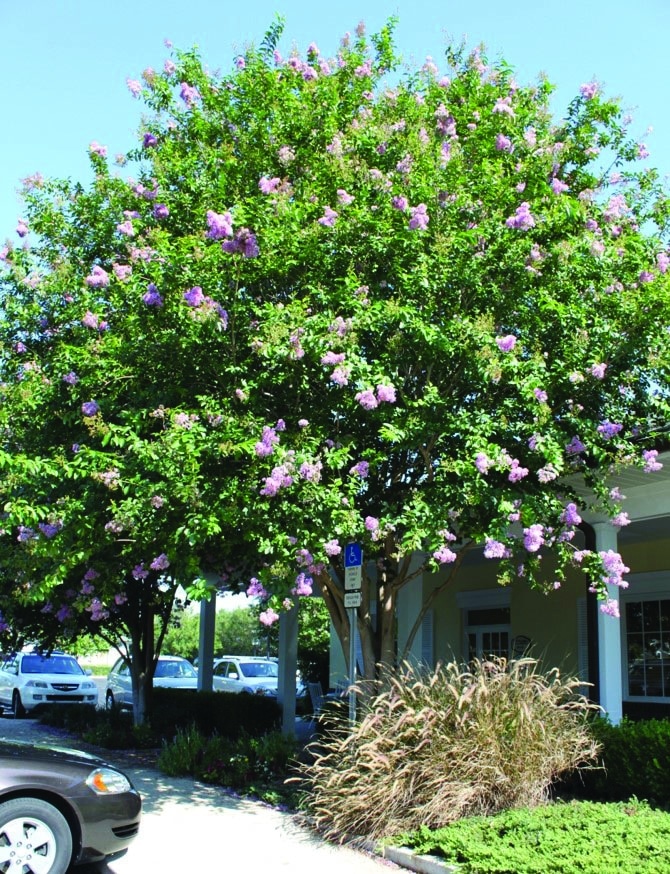Crape myrtles are one of the best plants to incorporate into your landscape. We often refer to these plants as the “Lilacs of the South.” Crape myrtles come in all shapes and sizes. You can select one that matures to a height of four feet or one that may grow to 25 feet. Flowers vary in hues of pink, white and red. When established, crape myrtles require very little maintenance. However, sometimes you may see leaves turning black.
This could be a sign that your crape myrtle may have aphids. The crape myrtle aphid, Tinocallis kahawaluokalani, is host specific, feeding exclusively on its plant of choice. This means this insect will not spread to neighboring plants of a different species. These are honeydew producing insects that will also attract ants. These ants “farm” the aphids for the sweet honeydew and will protect them from predators such as ladybird beetles and lacewing larvae. The crape myrtle aphid resides on the undersides of leaves. The excrement, or frass, from the aphids drop onto the upper portion of the leaf below them. A fungus known as sooty mold then grows on the honeydew. This black sticky mold is very evident. It is black and rubs off. Many homeowners are concerned with the fungus, when the major problem is actually the aphids. The fungus doesn’t really harm the plant. When sooty mold is severe, it may interfere with photosynthesis and may cause leaf drop. This sounds bad, however, research suggests that it really doesn’t affect the long term health of the plant and the crape myrtle usually rebounds the following year.
If homeowners want to manage this pest, then here are several tips we can provide. First, make sure you are not over-watering the crape myrtles. Overwatering causes excessive growth, which aphids prefer. Applying too much fertilizer also attracts aphids. If a crape myrtle is in the right place, it may not even need fertilizer at all. Proper pruning is also critical. Remove suckers from the bottom and remove any cross branches or dead limbs. This allows for better air circulation. If your crape myrtle has aphids or sooty mold and it is not that severe, then consider letting Mother Nature take control. Beneficial insects such as ladybird beetles, lacewing larvae, parasitoid wasps and other predators will help suppress the aphid population. Many beneficial insects can also be purchased online and shipped to your home for release.
If the damage is severe and warrants chemical use, start with the least toxic chemical. Insecticidal soaps work great. Just remember these are non-selective and will kill beneficials. If you happen to see any beneficial insects on the crape myrtle, pick them off and place them on another plant. Systemic and contact insecticides will also work well, but should be used only as-needed. As always, read the label. Application of the insecticide is also very important. Make sure to apply the product under the leaves, where the aphids are. Re-application may be necessary.
IFAS Extension programs are open to all persons without regard to race, color, sex, age, disability, religion, or national origin.

